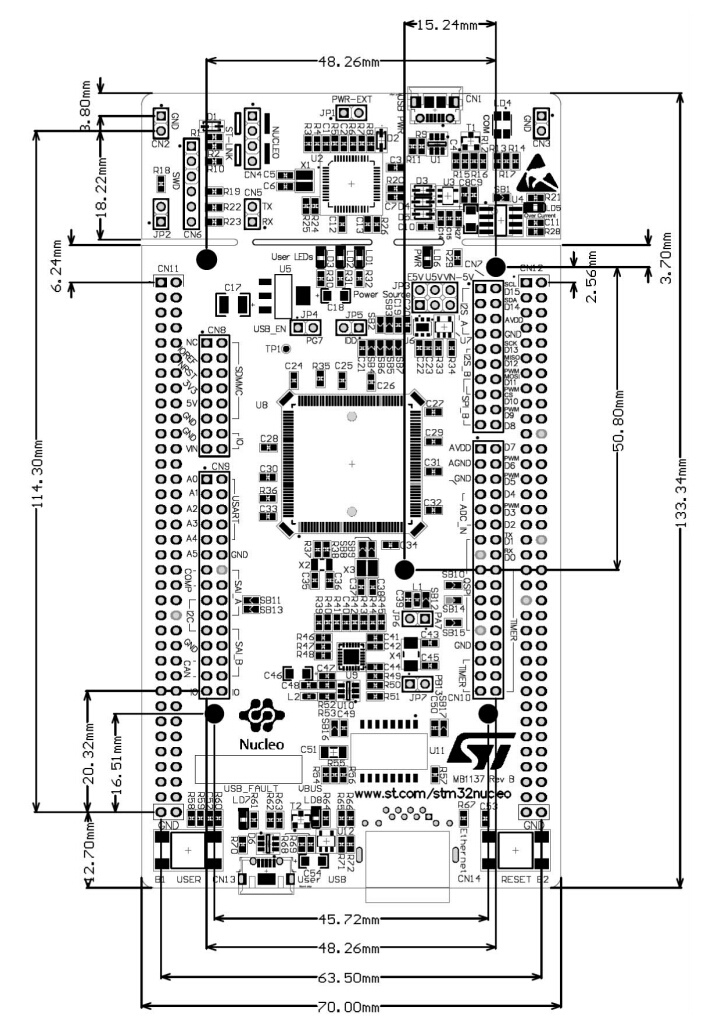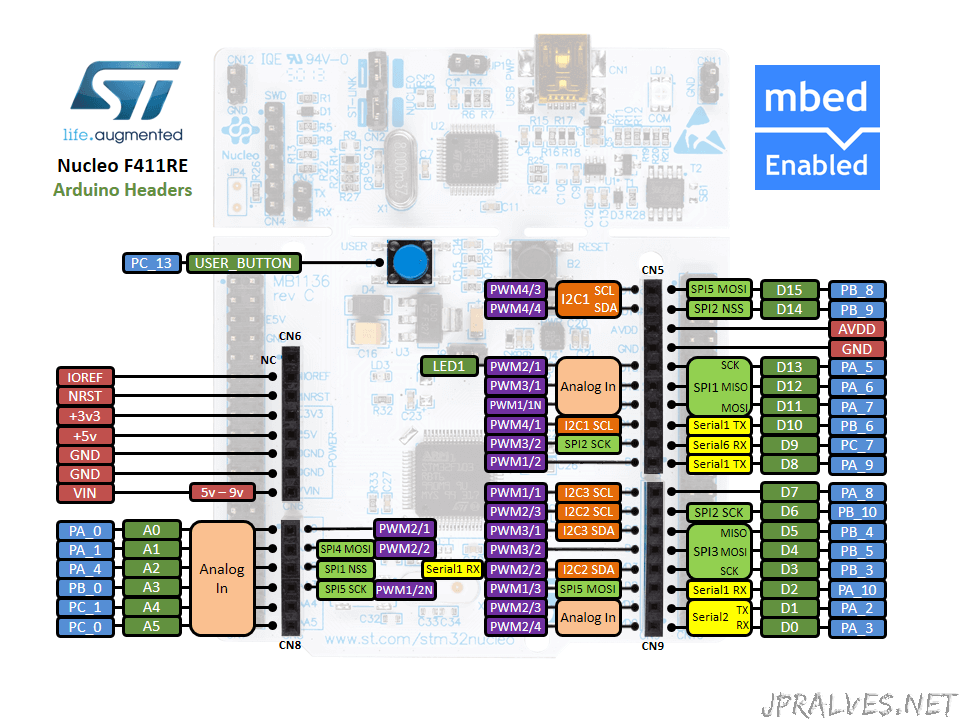

- Nucleo board without morpho header pins how to#
- Nucleo board without morpho header pins full#
- Nucleo board without morpho header pins software#
- Nucleo board without morpho header pins series#
Externally, however, two double strips of male contacts (one per side) are what STM calls “Morpho” pinout, used on other STM development boards. One of the first aspects that we can note is the presence of many contacts on card’s border, including the now famous female contacts connector compatible with the Arduino shield. Each NUCLEO board differs for performances, power consumption, clock frequency and flash memory capacity of the STM32 microcontroller in figure.įrom here on, we will analyze the NUCLEO model F401 and we will move our first programming steps, but many of the aspects and features that we will see later will be valid for any other NUCLEO board.

Nucleo board without morpho header pins series#
The whole series of NUCLEO development boards is equipped with a STM32 microcontroller based on ARM Cortex-M family, adopting a 32-bit RISC architecture. The board name comes from the microcontroller mounted on the board ( STM32F401) which is its heart.
Nucleo board without morpho header pins how to#
We will also see how to program it and test it by using some development environments available and a first sample program. In this post we will examine the NUCLEO F401RE board that is among the best performing in the series, not only because it is based on an ARM processor with a 84 MHz clock, a 512 Kb flash memory and an integrated floating-point unit, but also for a number of interesting features that we will see together. Some of these boards are simple clones, other are at much higher level having better performances and memory storage.Īmong those, a really interesting solution is represented by the development boards family called NUCLEO made by STMicroelectronics, a semiconductors leader company. The success of Arduino and its countless shields, kicked off in recent years the birth of several compatible development boards designed to help us creating in a short time, at low cost and easily, great and even complex electronic applications.
Nucleo board without morpho header pins full#
Key Features: STM32 microcontroller in LQFP64 package External SMPS to generate Vcore logic supply (only available on '-P' suffixed boards) 1 user LED shared with ArduinoTM 1 user and 1 reset push-buttons 32.768 kHz LSE crystal oscillator Board expansion connectors: ArduinoTM Uno V3, ST morpho extension pin headers for full access to all STM32 I/Os, External SMPS experimentation dedicated connector (only available on '-P' suffixed boards) Flexible power-supply options: ST-LINK USB VBUS or external sources On-board ST-LINK/V2-1 debugger/programmer with USB re-enumeration capability.Today we present the first steps with the NUCLEO development boards, produced by STMicroelectronics, that can help us to move towards the ARM 32-bit world with simplicity and great performances, keeping a compatibility with Arduino expansion connectors so that we can use its commonly available shields.
Nucleo board without morpho header pins software#
The STM32 Nucleo board comes with the STM32 comprehensive software HAL library together with various packaged software examples, as well as direct access to the Arm MbedTM online resources at. The STM32 Nucleo board does not require any separate probe as it integrates the ST-LINK/V2-1 debugger and programmer.

The ArduinoTM Uno V3 connectivity support and the ST morpho headers allow the easy expansion of the functionality of the STM32 Nucleo open development platform with a wide choice of specialized shields. For the compatible boards, the SMPS significantly reduces power consumption in Run mode. The STM32 Nucleo board provides an affordable and flexible way for users to try out new concepts and build prototypes with the STM32 microcontroller, choosing from the various combinations of performance, power consumption and features.


 0 kommentar(er)
0 kommentar(er)
